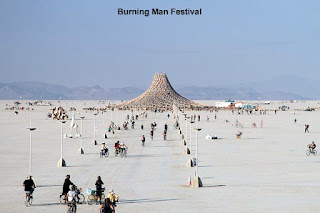Census data has revealed an unlikely religion is on the rise in England and Wales: shamanism.
Census results published by the Office for National Statistics show that less than half of people in the two British nations, England and Wales, identify themselves as Christian. The announcement has also reportedly renewed calls to end the Church of England's role in parliament and schools.
Notably, the people were asked what their religion was rather than about their religious practices or beliefs, a question which is optional since 2001. The number of people who identified as Christians were down from 59.3 per cent in 2011 to 46.6 per cent in 2021. On the other hand, people who said they do not have a religion grew from 25 per cent a decade ago to 37 per cent, last year.
Shamanism is expanding faster than any other religion, with the number of people saying they practice it rising from 650 in 2011 to 8,000 in 2021 in England and Wales. The result might prove controversial, as the Shamanism UK website asserts "it is not a religion, more an authentic expression of mankind’s spirituality."
Pagans and wiccans are also becoming more established. Pagans, who number 74,000 people (up from 57,000 in 2011) and who gather most in Ceredigion, Cornwall and Somerset, and wiccans, who number 13,000. Wicca is sometimes described as a witchcraft tradition whose roots lie in pre-Christian religious traditions, folklore, folk witchcraft and ritual magic.
There was a small rise in numbers of Buddhists. Despite the growth in mindfulness meditation practice over the last decade, the number of people following Buddhism, from which the practice derives, saw just a modest increase of 0.1 percentage points, from 249,000 to 273,000 people identifying as such in England and Wales. The highest concentration of Buddhists was again found in Rushmoor in Hampshire -- home to the Aldershot Buddhist Community Centre -- where the census counted 4,732, up from 3,092 a decade ago.
Census results published by the Office for National Statistics show that less than half of people in the two British nations, England and Wales, identify themselves as Christian. The announcement has also reportedly renewed calls to end the Church of England's role in parliament and schools.
Notably, the people were asked what their religion was rather than about their religious practices or beliefs, a question which is optional since 2001. The number of people who identified as Christians were down from 59.3 per cent in 2011 to 46.6 per cent in 2021. On the other hand, people who said they do not have a religion grew from 25 per cent a decade ago to 37 per cent, last year.
Shamanism is expanding faster than any other religion, with the number of people saying they practice it rising from 650 in 2011 to 8,000 in 2021 in England and Wales. The result might prove controversial, as the Shamanism UK website asserts "it is not a religion, more an authentic expression of mankind’s spirituality."
Pagans and wiccans are also becoming more established. Pagans, who number 74,000 people (up from 57,000 in 2011) and who gather most in Ceredigion, Cornwall and Somerset, and wiccans, who number 13,000. Wicca is sometimes described as a witchcraft tradition whose roots lie in pre-Christian religious traditions, folklore, folk witchcraft and ritual magic.
There was a small rise in numbers of Buddhists. Despite the growth in mindfulness meditation practice over the last decade, the number of people following Buddhism, from which the practice derives, saw just a modest increase of 0.1 percentage points, from 249,000 to 273,000 people identifying as such in England and Wales. The highest concentration of Buddhists was again found in Rushmoor in Hampshire -- home to the Aldershot Buddhist Community Centre -- where the census counted 4,732, up from 3,092 a decade ago.













